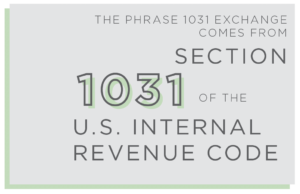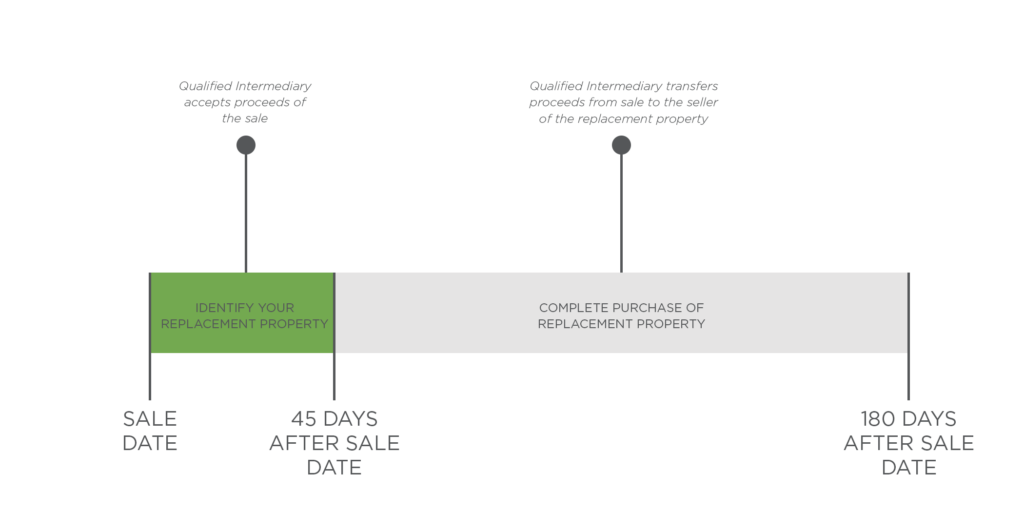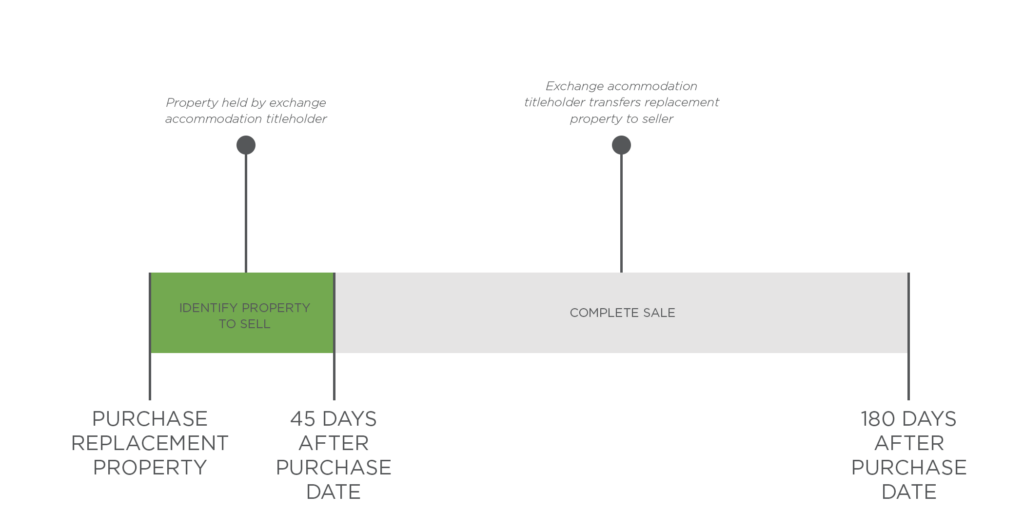Many seasoned investors may be familiar with the term “1031 exchange,” but oftentimes this is an unfamiliar phrase for new investors. A 1031 exchange allows an investor to sell their investment property and defer paying capital gains tax by purchasing a like-kind property.There can be many benefits to this, one of which is that this then frees up more capital to be invested in a replacement property, maximizing your total investment.

reasons to pursue a 1031 exchange
- You may wish to buy a property that has better potential for return.
- You might want to diversify for assets.
- You might find it beneficial either to consolidate several properties into one asset or divide a single property into several assets.
- You may want to reset the depreciation clock on your investment.
definitions worth knowing
Qualified Intermediary: A qualified intermediary is an individual or company who helps facilitate a 1031 exchange. This party cannot have any other formal relationship with the buyers/sellers. The reason this role is necessary is because any profits received from the sale of the initial investment property remain taxable, instead the proceeds must be held by the qualified intermediary until they can be transferred to the sellers of the replacement property in order to avoid be subject to the tax.
Depreciation: Depreciation is the percentage of the property that is written off due to regular wear and tear. When a property is sold, it is subject to capital gains tax, which is calculated on the property’s net-adjusted basis, which is the original purchase price, plus capital improvements, less depreciation.
Like-Kind Property: Property is considered like-kind if they are the same type of asset (i.e. is of the same nature or character). For the most part, all real estate investments are like-kind, even if they are a different type of property. For example, a rental home and a piece of land may still be considered like-kind.
timelines to abide by
If you are going to pursue a 1031 exchange, there are a couple timelines to make sure you follow! (There are also a few rules you need to know, be sure to click the link the bottom to learn more about those.) Once you sell your investment property, you have 45 days to identify a like-kind replacement property (or properties) into which you will roll the proceeds from your sale. It is very important to note that the entire transaction must be completed within 180 days of that sale!

Figure 1 – Timeline of a 1031 Exchange
But what if the perfect investment hits the market, but you haven’t yet sold your initial investment property? Does the required timeline mean you can’t use a 1031 exchange in that new investment transaction? Nope! Instead of a normal 1031 exchange, you can use what they call a reverse 1031 exchange. As you can see in this second timeline, a reverse 1031 exchange lets you buy a replacement property in a 1031 exchange before even selling your investment. Just like with a normal 1031 exchange timeline, you have 45 days to identify and a total of 180 days to complete your transaction.

Figure 2 – Timeline of a Reverse 1031 Exchange
{{cta(‘a0f57384-1ef9-426c-88d4-862df111aa1a’)}} to learn more about some of the intricacies of this type of transaction. There is so much to tackle when it comes to 1031 exchanges, we have barely even scratched the surface. Stay tuned, this definitely won’t be the last you hear from us on this topic!
The material provided above is for informational purposes only and not for the purpose of providing legal advice.
